Country Language spoken Region | Population 130,816 (2010) Area 1,466.34 km2 | |
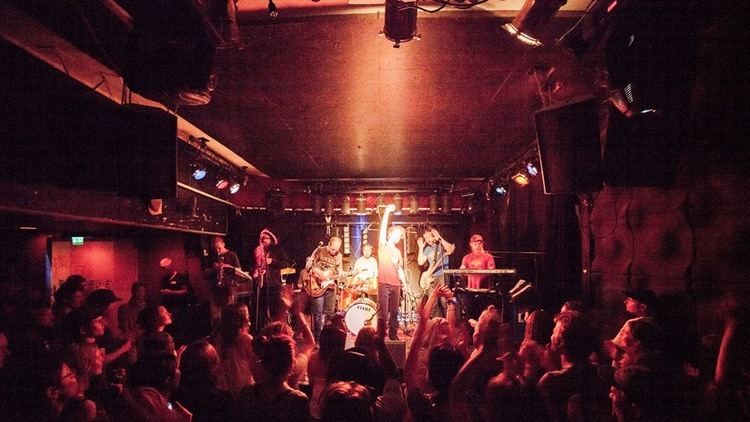 | ||
Points of interest Petajavesi Old Church, Pyha-Hakki National Park, Ahtari Zoo, Leivonmaki National Park, Isojarvi National Park | ||
Mannerheim museum helsinki finland
Jyväskylä ([ˈjyvæsˌkylæ]) is a city and municipality in Finland and in the western part of the Finnish Lakeland. It is the largest city in the region of Central Finland and on the Finnish Lakeland.
Contents
- Mannerheim museum helsinki finland
- Map of Jyvskyl
- Travel centre jyv skyl finland 2009
- Etymology
- History
- Geography
- Climate
- Population
- Languages
- Migration
- Military
- Economy
- Museums
- Theaters
- Annual events
- Sports
- Government
- Seat distribution in the city council
- Administrative division
- Cityscape
- Education
- Transport
- Former city managers
- Twin towns Sister cities Friendship cities
- Literature
- References
Map of Jyväskylä
Elias Lönnrot, the compiler of the Finnish national epic, the Kalevala, gave the city the nickname "Athens of Finland". This nickname refers to the major role of Jyväskylä as an educational centre, and as the first place in the world to provide education in Finnish.

The works of the most famous Finnish architect Alvar Aalto can be seen throughout the city. The city hosts the Neste Oil Rally Finland, which is part of the World Rally Championship. It is also home of the annual Jyväskylä Arts Festival and Vinokino, an annual lesbian and gay film festival.
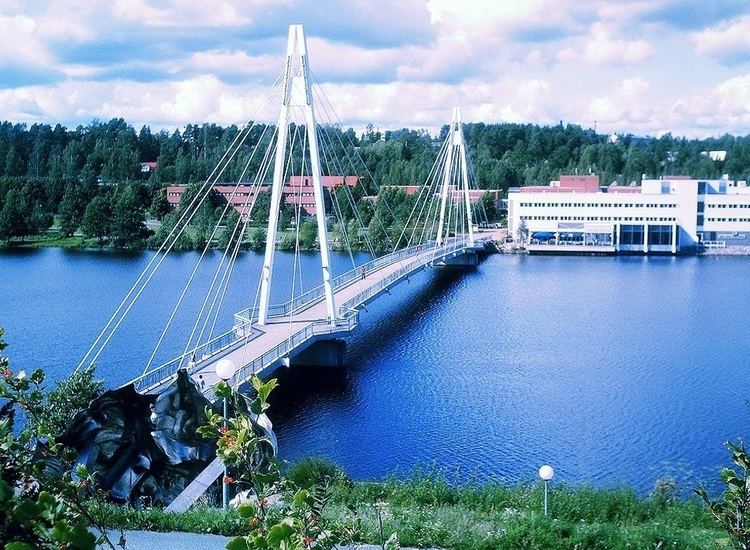
As of 31 March 2016, Jyväskylä had a population of 137,392. The city has been one of the fastest growing cities in Finland during the 20th century. In 1940, there were only 8,000 inhabitants in Jyväskylä. The Jyväskylä sub-region includes Jyväskylä, Hankasalmi, Laukaa, Muurame, Petäjävesi, Toivakka, and Uurainen.
Travel centre jyv skyl finland 2009
Etymology
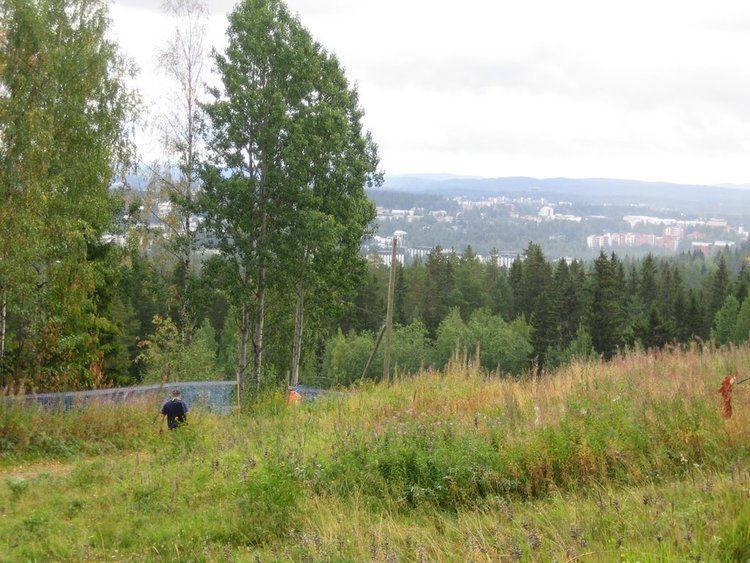
The second part of the city's name, kylä, means village. The first part of the city's name, jyväs, has been associated with Taxus, a genus of yews, and the Old Prussian word juwis. It has also been speculated that the word jyväs refers to the sun's reflection of the surface of the water.
History
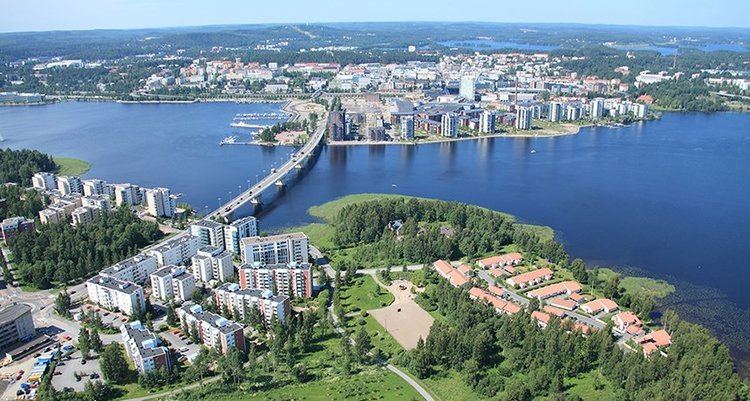
In the Jyväskylä region, there are archeological findings from the Stone Age. According to the oldest available taxation documents (maakirja), there were seven estates on the Jyväskylä region in 1539. One of them, the estate of Mattila, alone possessed the areas stretching from the village of Keljo to the villages of Vesanka and Palokka. The oldest estate in Jyväskylä continuously held by the same family is the estate of Lahti, which emerged when the estate of Mattila was split between two brothers in 1600. The history of the estate of Lahti and the family of Lahti have had a significant impact on the development of Jyväskylä region. Lahdenrinne, in the south-west corner of Jyväsjärvi lake, belongs to the old heartland of the estate of Lahti.
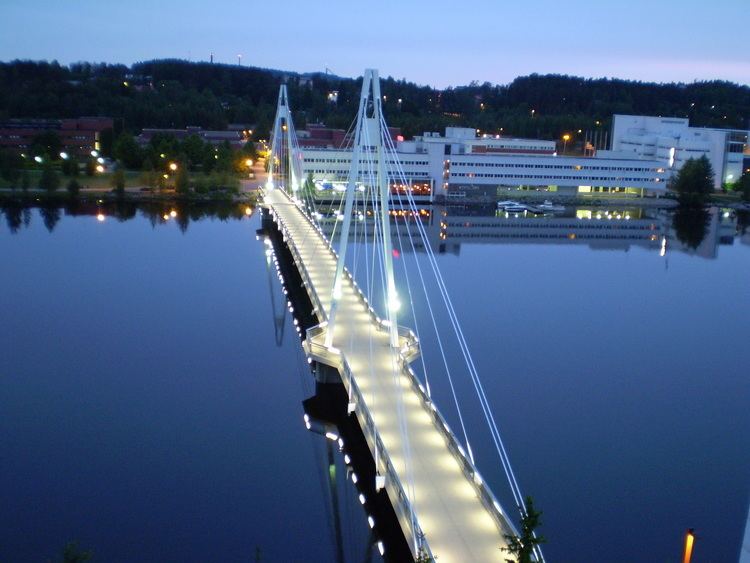
The City of Jyväskylä was founded on 22 March 1837 when Emperor of Russia and Grand Duke of Finland, Nicholas I of Russia, signed the charter of the city and the infrastructure was essentially built from scratch. At the times Finnish military battalion Suomen kaarti participated under his rule in military operations against the Polish November Uprising and later in Hungary, Turkey and Bessarabia (today Moldova). While Nicholas I of Russia abolished many autonomous areas, it has been argued, that the loyalty of Finnish military influenced his approach towards Finnish autonomy. The original town was built between Lake Jyväsjärvi (which is connected to Lake Päijänne) and the Jyväskylä ridge (Harju), and consisted of most of the current grid-style city centre.
The establishment of schools in the 1850s and 1860s proved to be the most significant step in regards to the later development of Jyväskylä. The first three Finnish-speaking schools in the world were founded in Jyväskylä, the lycée in 1858, the teachers’ college in 1863, and the girls’ school in 1864. Well-trained teaching staff and pupils from different parts of the country changed the atmosphere of Jyväskylä irrevocably.
In the early 20th century, the town expanded several times. Most of today's Jyväskylä was built after the Continuation War, when refugees from Karelia and other parts of the country moved to the city, and housing was badly needed. During the 21st century Jyväskylä has grown fast – by over 1,000 inhabitants every year.
Säynätsalo was consolidated with Jyväskylä in 1993, and Jyväskylän maalaiskunta and Korpilahti, for their part, on January 1, 2009.
Geography
Jyväskylä is located on the northern coast of Lake Päijänne, 147 kilometres (91 mi) north-east of Tampere and 270 kilometres (170 mi) north of Helsinki. The hilly and forested terrain in Jyväskylä is surrounded by hundreds of lakes. To reach Jyväskylä from East, one needs to go through or pass the hill Kanavuori, which used to host a military depot full of ammunition and armaments. There is a train tunnel though the rock, which provides a scenic experience in otherwise relatively plain territory.
Jyväskylä is located in the Finnish Lakeland. There are 328 lakes in the city, and lakes and rivers constitute 20,1% (295 km2) of the total area of the city. The city's largest lakes are Päijänne, Leppävesi, Tuomiojärvi, Palokkajärvi, Luonetjärvi, and Alvajärvi-Korttajärvi. The city center is located on the shores of a small Jyväsjärvi.
The landscape in Jyväskylä is hilly, forested and full of waters. The architect Alvar Aalto compared the hilly landscape of Jyväskylä to Toscana in Italy: "The slope of Jyväskylä ridge is almost like the mountain vineyards of Fiesole".
Climate
Because of its northern location, winters are long, snowy, cold, and dark. During midwinter, the city receives daylight for only around five hours. Summers are mild, with the average daily maximum temperature being 22 °C (72 °F) in July. During the summer, Jyväskylä experiences long daylight and white nights i.e. midnight twilight.
Population
Jyväskylä was the fastest growing Finnish city in the 20th century. The population has continued to grow rapidly in the 21st century.
Languages
96.7% of the population spoke Finnish as their first language in 2010. The share of Swedish speakers was 0.2%. Other languages made up the remaining 3% of the population.
Migration
In year 2014, there were about 3,700 foreigners in Jyväskylä. The largest immigrant groups in Jyväskylä are Russians, Estonians, and Afghans.
Military
Jyväskylä hosts the headquarters of Finnish Air Force, in Tikkakoski. As a central location, it has traditionally been important base for military operations. Jyväskylä got also known as major firearms manufacturer (Tikkakoski (company)) during the world wars, producing machine guns and ammunition.
Economy
Because of excellent connections, Jyväskylä was a busy marketplace even before the first permanent settlements were founded in the current city centre. The establishment of Finland’s first three Finnish-speaking schools: the lycée in 1858, the teachers’ college in 1863, and the girls’ school in 1864 proved to be the most significant steps in regards to later development of Jyväskylä. Educational services became the heart of the economic growth of the city. In 1912 Wilhelm Schauman founded a plywood mill on the shores of Jyväsjärvi. Soon other kinds of forest based businesses opened factories and premises in the city. Thus, lumber, pulp, and paper became the second stronghold of the economy in Jyväskylä. Later, the high quality education and paper machinery industry tempted information technology businesses to settle in the city.
Nowadays, the main sources of substinence in Jyväskylä are educational and health care services, paper machinery production, information technology, and renewable energy. The most important private employers are paper machinery producer Metso ltd., retail trade company Keskimaa Cooperative Society, real estate service company ISS, and wind turbine gear manufacturer Moventas. The biggest public employers are the City of Jyväskylä, the Central Finland Health Care District, the University of Jyväskylä, and the Air Force Academy.
As of 2010, only 1% of the labor force works on the primary sector, 21% on the secondary sector, and 78% on the service sector of the economy.
In April 2012, the unemployment rate in Jyväskylä was 12.2%, which was higher than average in Finland (9.8% in 1/2012). As of July 2012, there are about 61,000 jobs in Jyväskylä. The average income per income earner was €24,380 in 2010.
In 2011, Jyväskylä topped in an image evaluation study among businesses. The city reached the highest score of large Finnish cities in the study, succeeding especially in the availability of skilled work force, on commercial services, on transport connections, and on geographical location.
The Gross domestic product per capita in the city of Jyväskylä was €33,688 in 2005. The self-sufficiency in workplaces exceeded 100% in the city, raising the GDP per capita higher than the national average. The GDP per capita of the whole Jyväskylä region was €28,718 in 2007. The regional GDP per capita is lower than the Finnish national average, mainly due to high number of students and a relatively high unemployment rate.
Museums
The Alvar Aalto Museum and the Museum of Central Finland form a center of culture in the immediate vicinity of the historical campus of the University of Jyväskylä. Both museums are designed by functionalist Alvar Aalto. The Alvar Aalto Museum displays the artist's most important work and design. The Museum of Central Finland specializes in cultural history. It serves both as the town museum of Jyväskylä and the provincial museum of Central Finland. In summer 2015 Alvar Aalto Foundation and the city of Jyväskylä launched an architect competition to connect the two museums.
One of architect Aalto's most significant works, Säynätsalo Town Hall, is located in Säynätsalo island.
The city hosts the Craft Museum of Finland, which presents a range of different handicraft techniques from across the country, as well as a centre dedicated to the conservation of textiles that serves private customers, museums and organisations. The National Costume Center of Finland forms a part of the museum.
The Aviation Museum of Central Finland near the Jyväskylä Airport in Tikkakoski exhibits the aviation history of Finland.
The University of Jyväskylä Museum is specialized in the history of the University and diversity of nature in Central Finland.
Jyväskylä Art Museum, located the city centre is the regional art museum of Central Finland. In collaboration with the Centre for Creative Photography, the Jyväskylä Art Museum maintains The Ratamo Printmaking and Photography Centre. This centre consists of the Galleria Ratamo along with a printmaking workshop, photography studio and artist workspaces all situated in Jyväskylä’s former roundhouse.
In addition, historical churches in the city are open for public, most notables of them being the Taulumäki Church and the Jyväskylä City Church.
Theaters
The biggest theater in the city is the Jyväskylä City Theatre, designed by Alvar Aalto. It stands right in the center of the city.
In addition to the City Theatre, more than dozen amateur drama companies serve audiences of all ages. The most popular theatres include:
Annual events
Sports
The University of Jyväskylä is the only university in Northern Europe with a faculty of sports. The faculty has been a key player to develop a strong sports culture in the city.
The city hosts the Neste Oil Rally Finland (formerly known as the 1000 Lakes Rally). It is the biggest annually organised public event in the Nordic countries, gathering over 500,000 spectators every year. The rally has been held since 1951, first as a national competition, then from 1959 on as a European Rally Championship event and since the introduction of the World Rally Championship in 1973, as Finland's WRC event.
Ice hockey venue Synergia-areena, Hippos Finnish baseball stadium, swimming hall AaltoAlvari, and many other primary sport venues of the city are located in Hippos, two kilometres (1.2 miles) away from the city centre. The Matti Nykänen ski jumping hill is located next to the Laajavuori ski resort just few kilometres west from the city centre. The main football stadium lies on the slopes of Harju just next to the city centre. The Killeri hippodrome on the western parts of the city serves different horse racing competitions. At winter time, amateur ice skaters can practice their skills in Viitaniemi or on the lake Jyväsjärvi, which has a 3.5 km (2.2 mi) long ice skating track.
The inventor of Finnish national sport pesäpallo, Lauri "Tahko" Pihkala, studied and lived in Jyväskylä. The Upper secondary school of Jyväskylän Lyseo hosted the historic event of first pesäpallo match in world in September 1920.
Sports teams from Jyväskylä include:
Government
The city council of Jyväskylä is the main decision making body at the local level. Its 75 members are elected every fourth year in municipal elections. The city council elects the mayor. The current mayor is Timo Koivisto.
Seat distribution in the city council
The prevalence of the social democratic party can be explained in part by the Vaajakoski, a major industrial center historically that is currently part of Jyväskylä, and its heritage of industrial workers voting social democrats.
Administrative division
The city of Jyväskylä is divided into fourteen wards (suuralueet; storområden), which are further divided into 89 districts. The ward division does not always follow district boundaries.
The following is a listing of the 14 wards of Jyväskylä by population, as of November 2010
Cityscape
Jyväskylä was founded in the northern end of the lake Päijänne at the crossroads of three major waterways. Lakes control the cityscape. The city grid plan from 1833 by Jacob Leonard Boringh can be well recognised in the city center. Nevertheless, due to very rapid population growth, the cityscape has gone through one of the most massive changes in all of Finland.
Nowadays, Jyväskylä is a city of modern architecture. The city has more buildings designed by one of the best known international functionalist architects Alvar Aalto than any other city in the world.
The establishment of schools in the 1850s and 1860s proved to be the most important step from the point of view of the later development of Jyväskylä. The headquarters of the University of Jyväskylä are considered to be Aalto's masterpieces. Later, a modern architect Arto Sipinen, a pupil of Aalto, has influenced the cityscape since the 1970s by designing most of the new university buildings in the city.
The outskirts of the city are mainly populated by student apartments and single-family houses. Some of the most important buildings, like Säynätsalo Town Hall, designed by Aalto are located outside the city centre in Säynätsalo and Muuratsalo.
Consolidated areas Korpilahti, Jyväskylän maalaiskunta, Säynätsalo and also western parts of Jyväskylä are mainly countryside dominated by hilly forests and lakes.
Education
Jyväskylä is a traditional centre of education. Including school children, and the students in high schools, vocational schools, the university of applied sciences, and the universities, the number of students and pupils in the city reaches 45,000, boosting Jyväskylä's reputation as a "student city". Over 30% of the city population are students. A number of firsts in Finnish education have taken place in Jyväskylä:
Due to this, among other things, the city has earned the nickname Athens of Finland. The teacher training college later evolved into the College of Education (1934) and further into the multidisciplinary University of Jyväskylä (1966).
The University of Jyväskylä is one of the most popular universities in Finland. Almost 16,000 students are enrolled to study for a bachelor's or master's degree, and the university also offers PhD programs in most of its subjects. Historically, the university has excelled in the study of education, but in the last few decades it has also gained respect in the sciences. It is the only university in Finland offering university-level education in sports, training sports teachers and coaches. Today the University offers also Cyber Security degrees, in close co-operation with the Finnish Defence Forces. According to the Ministry of Employment and the Economy the city has been acknowledged in 2013 as the Cyber Security City, providing a portfolio of Cyber Security related studies and activities.
JAMK University of Applied Sciences has 8.000 students. It has four different units: School of Business and Services Management, School of Health and Social Studies, School of Technology and Teacher Education College. HUMAK University of Applied Sciences educates cultural management in Jyväskylä. The JAMK also
Transport
Jyväskylä railway station is served by VR direct trains to Helsinki, Pieksämäki, Tampere, Turku, Vaasa and many other destinations in Finland. The station was extensively modernised in 2002.
Jyväskylä Airport is situated in Tikkakoski, about 20 kilometres (12 mi) north of Jyväskylä. It has regular direct flights to Helsinki Airport. The airport serves also as a military and charter airport.
The city is on crossroads of many main roads of Finland. European route E75 passes the city from south to north, and E63 from southeast to northwest.
Jyväskylä harbour is home to many passenger ships operating on lake Päijänne. During summer time, there are direct ship connections to Lahti, Jämsä, Suolahti, Viitasaari, and some other cities.
The public transportation system of Jyväskylä is managed by the city under the Linkki brand and operated under contract to the city by Jyväskylän liikenne. It is based on bus lines.
Former city managers
Twin towns — Sister cities — Friendship cities
Jyväskylä is a member city of Eurotowns network and is twinned with:
